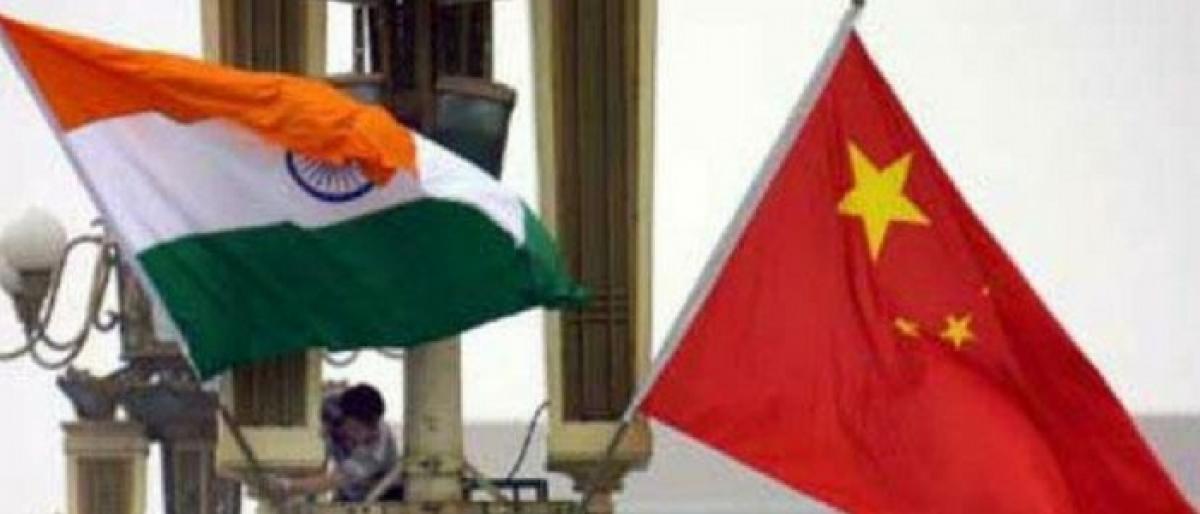Live
- Peddireddi touched my feet for DCC post, recalls Kiran
- All politicos must commit to free press
- Risk of Middle East escalation
- 50 families quit YSRCP, join TDP
- Nara Bhuvaneshwari to File Nomination Papers on Behalf of TDP Chief Chandrababu in Kuppam
- Tamil Nadu BJP Chief Announces End Of Dravidian Politics, Foresees BJP Surge
- YS Jagan's Memanta Siddham Bus Yatra begins in Rajapuram, to enter Kakinada by evening
- Not just promises, look for capacity to deliver them
- Sujana Chowdary files papers for Vijayawada West
- Unlocking the Potential of FASTag: Enhancing Parking Solutions with RFID Technology
Just In

Boundary disputes are never irreconcilable, nor vital interests non-negotiable. During Jawaharlal Nehru\'s era, India had the McMahon Line, and China the road.
Boundary disputes are never irreconcilable, nor vital interests non-negotiable. During Jawaharlal Nehru's era, India had the McMahon Line, and China the road.
But, Nehru, as was his wont, never believed in negotiations with China on the boundary disputes, despite China offering to respect McMahon Line, because he steadfastly believed in the dictum that negotiations meant compromises.
"It may take five, ten or thirty years…for India to settle the dispute with China,” he said referring to the conflict with China. Today, the same question haunts us again as China ratchets up the border issue.
However, both the countries need to ask themselves some soul-searching questions at least now. What are the legitimate interests that are not reconcilable with each other's interests? What motivated China and what were its objectives in launching the military offensive on October 20, 1962?
Why did India launch "The Forward Policy" in 1961 which could have provoked China to launch the aggression? Despite harboring devious plans to establish its military dominance over India, China raises the heat now, accusing India of transgression and violation of 'Panchsheel.'
Prime Minister Narendra Modi's strong leadership and his emerging popularity due to his deft foreign moves have not been welcome to China at all and makes it forget that the Sino-Indian problem is a historical legacy with the entire Indian northern frontier remaining an unfinished business.
Three trijunctions are yet to be defined. The boundary agreement between India and Burma only qualifies that "the exact location of which Northern extremity will remain provisional pending its final determination.” This cannot be decided unless the three countries, India, Myanmar and China, come together.
Then there is this China-Nepal border protocol, leaving the two trijunctions in Sikkim and Pithoragarh district unclear. These were also excluded by both the countries from the physical survey. India did not take part in the negotiations. China has been silently working to strengthen its military infrastructure all around since 1962.
Its belligerence and intolerance towards those who question the rationale behind its aggressions is on the rise now-a-days and the latest Sino-Indian stand-off must be seen from this context. For China, a peaceful settlement means humble submission by its neighbour and to build a public consensus, it uses its state-controlled media mouths.
It is unable to swallow the emergence of a strong contender such as India in the neighborhood. Be it on the issue of Dalai Lama or on the OBOR, it feels belittled by India's stance and, hence, coercion now. It does not want any axis to develop against its interests and suspects India is capable of building one.
That is why it prefers to keep Indian borders simmering, by itself as well by Pakistan in the West. It's agitated over the contents of the latest Indo-US Joint Statement too, which puts India and the USA on the same page with respect to dealing with the rapidly growing influence and presence of China in the Indian Ocean and Indo-Pacific region.
Hope reason prevails and China, instead, walks its cooperative developmental talk. In modern warfare, there are going to be no winners, after all!

© 2024 Hyderabad Media House Limited/The Hans India. All rights reserved. Powered by hocalwire.com







